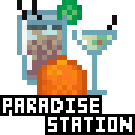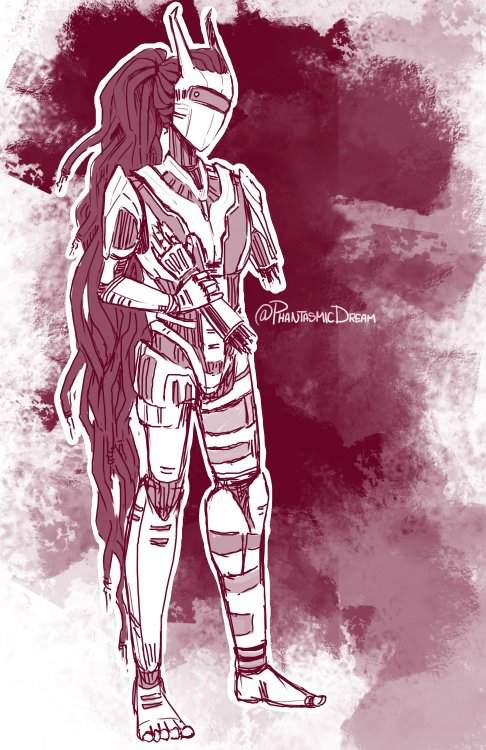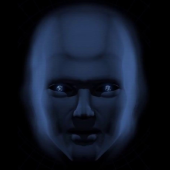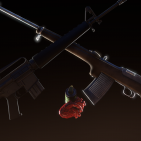Leaderboard
Popular Content
Showing content with the highest reputation on 02/12/2019 in all areas
-
A new critical system is on its way that is more involved, chaotic, and engaging to deal with--it's a long-awaited companion for Goonchem. This new system doesn't apply to all races--station races that do not utilize this new system are Diona, Slime People, and IPC; they will die using the old method of blacking out, slowly accumulating damage, then dying. Treating people is basically the same as before, with a few nuanced caveats. You apply patches or advanced trauma/burn kits to heal people, you inject them with chems to heal them, you can throw them in cryo to stabilize them. That said, how people lapse into crit will be fairly different. When your patient hits 0 health, they will lapse into a critical state where they can't see well, their movement can become scrambled, and they fall down a lot. During this time, they can acquire shock. Shock worsens these conditions. If shock is not treated, then the person will start undergoing cardiac failure. Treating shock can be healed by injecting saline or healing the underlying damage and getting their health solidly back into the healthy category. It's recommend you still inject saline as a primary tool, especially if they have heart failure (or you can't treat them in time while you're running to get some other medicines). Cardiac failure is even worse than shock; it'll become even more difficult to breathe, and if left untreated, will result in full out cardiac arrest. Treating cardiac failure is done with atropine or epinephrine. This condition will not go away by merely curing the underlying damage. You must treat it with atropine or epinephrine. Both chems are equally good at treating it; having both in the bloodstream, at once, increases the chances of treating it. Finally is cardiac arrest. When acquired, you'll flop on the ground and rapidly take brain and oxygen damage. Treating cardiac arrest can be done with full size defibs or the new handheld defibs. It it strongly recommended you utilize handheld defibs, as they're specialized in treating cardiac arrest. Death occurs primarily by brain damage; if the brain dies, your patient dies. A few helpful pointers and tips: -STOP RELYING ON CRYO. Cryo just heals damage, but doesn't treat the underlying conditions when someone is in a critical state. Time is your enemy under this new system; it's faster and better to apply patches (or advanced burn/trauma kits) or medicine directly to the patient than to throw them in cryo and wait for it to kick in and their body temperature to be low enough. Cryo should be used to stabilize patients who you don't have time to treat, but it shouldn't be the primary treatment method you rely on. -THERE IS A NEW HANDHELD DEFIB. Hanheld defibs work differently from full size defibs. They do not revive people from the dead. They purely treat patients undergoing cardiac arrest. They can also treat heavy O2 damage, so even if a patient isn't undergoing cardiac arrest, they are still useful for rapidly lowering O2 damage. Full size defibs cannot treat the O2 damage like handheld ones, and have a sizeable delay before activating; it's not recommend you use full size ones unless it's a desperate situation. -PAY ATTENTION TO YOUR HUD. A frowny green face is indicative of viruses; it could also mean they're in shock or undergoing cardiac failure. -CPR CAN SAVE A LIFE. CPR has been buffed dramatically under this system. It heals a significant chunk of O2 damage and completely resets the losebreath timer on a patient. In can really help, in a pinch, when someone is in critical condition. Don't expect it to save someone in full out cardiac arrest though. -Treating patients in deep critical is going to require a broad range of medications. It's strongly recommended you keep saline, epinephrine, mannitol, and salbutamol on you for dealing with deeply critical patients. Handheld defibs can help correct high amounts of O2 damage as can utilizing CPR, but handheld defibs can be unreliable at this task. O2 damage can accumulate incredibly rapidly, leading to a death spiral that will result in the patient's death in no time flat. In some situations, there will be cases where there nothing you can do. Treating a patient's damage is important, but always factor in shock, heart failure, and cardiac arrest into your plan of treating your patient, or else they're going to pay the ultimate price; their death. I'm sure there's more, but this should help you get a good start and help you treat patients on some level. Feel free to ask me any questions though!4 points
-
After the recent nerf of medbay (which the majority downvoted but got merged anyway), RnD has even less of a job to do during rounds, with one of the most critical departments almost not in need of updates. They should have just instead of this nerf, removed cloning entirely, but that's neither here nor there. The thing is, with this nerf, RnD has even less of a job to do. After maxing RnD levels, the 'scientists' usually just fuck about doing telescience, some xenobio or just print all cool shit and do nothing much else. Sometimes give departments stuff, if they even actually staff the desk. But the NSS Cyberiad is a science station. So we should really have some more actual science to do. We should have (IMO) more RnG based-content, things to discover. Or overhaul the current RnD process entirely. Now you can literally do 'RnD in ten minutes or less'. I'll be thinking of things. Post your ideas!1 point
-
So do you mean, sometimes we have xray, sometimes we don't? That *would* be awesome if that was possible, it would also help (not always, I admit) with x-ray OP'ness, etc. So not all of these are available every shift, and not all at once, that would be grand. Science has to be more RnG, otherwise there is no *science* to it.1 point
-
Name: KR4-3SHA Age: Date of construction and activation unknown Gender: Feminine Chassis Race: IPC Blood Type: Oil General Occupational Role(s): Primary: CMO or Paramedic Secondary: Chemist, coroner, geneticist, therapist, or AI Biography: "She" is an IPC with a feminine chassis. There no records as to where she came from nor any memories of it. There is a serial number branded on the left side of her torso that reads "KR4-3SHA". She appears to be constructed unprofessionally using a variety of scrap parts; a mixture of older Xion and Morpheus parts, as well as a few limbs that are of makeshift design. She regularly consumes Servo and Ultra Lube in an attempt to mitigate the damage caused by friction in her poorly constructed joints. Her posture is rigid. She has a long ponytail of thicker wiring that looks similar to dreadlocks. She has one thin red eye scanning back and forth that goes from antennae to antennae. She lacks much of her plating, leaving her frame wiring, and other internals exposed. She is completely devoid of emotion, speaking everything plainly as if stating a command. She has been programmed with extensive medical knowledge that she uses to treat organic humanoids, however she views them as flawed, inferior creatures. Still, she feels it is her sole purpose to "repair" organics. While off station she simply stands in departures at Central staring into the distance silently while awaiting the shuttle to arrive for her next assignment. She frequently arrives on station with graffiti off her chassis that was applied while she is in this "sleeping" state. Qualifications: "Unit is proficient in the repair and deconstruction of organic humanoids via standard, advanced, and unconventional medical procedures." *pings*" Employment Records: "Unit has been assigned the roles of: Chief Medical Officer, Paramedic, Chemist, Coroner, Geneticist, and Therapist, as well as being uploaded into the NSS Cyberaid's Artificial Intelligence core." *emits an affirmative blip*" Security Records: "ZZZZT%#ERROR. DATABANKS CORRUPT. *emits an irritated buzzing sound*" Nanotrasens security database indicate this IPC has been involved in syndicate activities, however they appear to have no recollection of this, suggesting they are either hacked and/or their memory is wiped upon completion or failure of tasks. Medical Records: "Units chassis is of female design. Diagnostics indicate that limbs are prone to malfunction and require regular maintenance . Lubrication can reduce joint friction and prolong the need for maintenance. *emits a negative blip*" Personnel Photo:1 point
-
1 point
-
Whoops, premature enteration and left it too long to edit the previous. main.ogg - Original: 884K - Contains audible sound only below ~8-10KHz, this is after removing the frequencies too quiet to hear via filter and encoding accordingly to match the original audio Sample rate -- Quality -- Size 44.1KHz -- Q 1 -- 421KB 22.0KHz -- Q 6 -- 511KB song_main.ogg - Original: 1,948K - after noise removal. This one is an example of how lowering the sample rate doesn't affect the sound while lowering the file size 22.0KHz -- Q -2 -- 400KB 32.0KHz -- Q -2 -- 506KB 44.1KHz -- Q -2 -- 560KB They're all relatively the same spectrum wise, just the 22/32 ones are very slightly quieter as they have a lower range There's also the benefit of lower encoding quality levels on higher quality / higher sample rate sources being able to carve out frequencies that are closer together without damaging the sound (ie the spectrum would look like /\/\/\/\/\/\) because the closer some frequencies are together the harder it is for the listener to be able to discern them from each other, and the sound test would end up sounding the same for the largest population of players. Ogg Vorbis itself has a low pass filter built into it, so keeping the sample rate high ends up with better results as the filter settings carve out the upper frequencies based on sample rate and drop the max frequency dramatically as quality setting and sample rate go down, though I'd prefer to do the filtering manually. A side effect of going through the audio and processing is I've been collecting proper attributions for anything I've been able to rebuild from a higher quality source, so that can actually be kept somewhere properly (I didn't see a list, only one single entry, though I didn't look horribly hard either). If I could output a list of 'used resources' instead of having to look them up in DM it'd be useful for targetting file optimisation as there's a lot of audio to optimise and some of those files actually aren't even used.1 point
-
Considering the fact the agent abductor has surgically grafted armor on them, I doubt they will just waltz it off as a grey. I would much rather prefer having their ship and gear upgraded a bit. The ship lacks the essentials every other tator with a ship has huge stashes of, particularly meds. And for gear? A proper monitor to keep track of all the peeps you've experimented on, as well as a view of their goals so you could potentially steer clear/assist them. Some fancy alien medithing for healing the agent when metanerds inevitably starts robusting everyone "by accident" to find him. Perhaps a floormounted medibeam projector? An alien medkit? The spaceship itself has healing chems in it's air supply? Who knows!1 point













